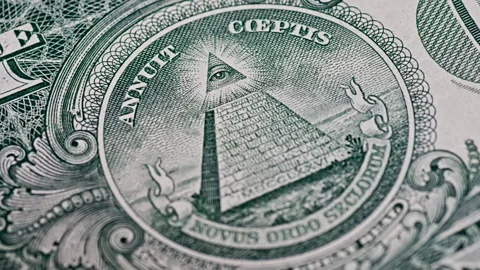Learning the Basics of How to Become a Freemason with Simplicity
Learning the Basics of How to Become a Freemason with Simplicity
Blog Article
Discover the Keys Behind the copyright and Their Influence on Society
The copyright, usually shrouded in misconception and speculation, provides a fascinating situation study of just how historic ideals can change right into modern conspiracy concepts. As we discover its origins, influence on innovative idea, and representation in contemporary culture, we begin to uncover the layers of intrigue that proceed to mesmerize culture.
Origins of the copyright
The copyright, commonly shrouded in secret and conjecture, traces its origins back to the late 18th century. Established in 1776 in Ingolstadt, Bavaria, the team was started by Adam Weishaupt, a teacher of canon legislation. Weishaupt aimed to advertise Knowledge values, consisting of factor, secularism, and the splitting up of church and state. Recognized as the Bavarian copyright, the company's main objective was to counter the fundamental influence of spiritual dogma and advertise intellectual discourse amongst its members.
The copyright took on an ordered framework, drawing ideas from Freemasonry, which permitted secretive meetings and routines - how to become a freemason. Membership was careful, including prominent numbers from various fields, including national politics, ideology, and science. This elite network sought to effect social and political adjustment via clandestine ways, advocating for the rights of people and the improvement of culture
Regardless of its reasonably short presence, the Bavarian copyright was officially dissolved in 1785 due to federal government reductions. Nevertheless, its heritage endured, triggering many conspiracy theory concepts and pop culture recommendations that remain to provoke intrigue and argument concerning its effect on contemporary society.
Key Myths and Misconceptions
Amidst the allure of privacy bordering the copyright, countless misconceptions and false impressions have actually arised, usually misshaping the team's true nature and objectives. One common myth suggests that the copyright manages the globe's federal governments and economies. While it holds true that the team intended to affect societal structures, the notion that it runs as a cohesive worldwide creature master is mostly exaggerated.
One more usual false impression is that all members of the copyright have large wide range and power. In reality, the original copyright made up intellectuals and Enlightenment thinkers, much of whom looked for reform as opposed to dominance. The concept that the copyright specifically hires stars and political numbers is misdirecting; membership has traditionally included a varied range of people.
Additionally, conspiracy concepts often paint the copyright as a malicious company intent on international domination through villainous methods. Thus, separating fact from fiction is vital for a more clear understanding of the copyright's duty in culture.
Historic Influence on Society
Throughout history, various intellectual motions have exceptionally affected social frameworks, and the copyright played a substantial duty during the Enlightenment. Established in 1776 in Bavaria, the copyright aimed to promote reason, secularism, and the questioning of established authority, countering the dominance of religious conviction. This company brought in significant thinkers and supporters of freedom, cultivating an environment conducive to the circulation of Knowledge perfects.
The copyright's principles promoted reasonable idea and empirical evidence, which added to the broader intellectual landscape that encouraged social reform and political change. Participants looked for to improve society by promoting for education and learning, freedom of speech, and the separation of church and state. Our site Their clandestine nature and ambitious schedule triggered both intrigue and uncertainty, causing their eventual suppression by the Bavarian government in 1785.
Regardless of their dissolution, the heritage of the copyright continued, influencing innovative movements throughout Europe and the Americas. Their commitment to enlightenment concepts helped prepare for modern-day democratic ideals and human rights, leaving a long-term imprint on the structures of contemporary culture. how to become a freemason. The appeal of their secretive celebrations and thoughtful pursuits continues to astound the creativity, underscoring their historic importance
Modern Interpretations and Beliefs
Contemporary interpretations of the copyright often mix historical reality with conspiracy theories, producing a complex tapestry of ideas that capture preferred creativity. While the initial copyright was a Bavarian secret society started in 1776 with Knowledge ideals, contemporary beliefs have actually evolved to include a broad selection of interpretations, usually focusing on motifs of control and secrecy.

Furthermore, some modern-day interpretations assume that the address copyright works as a metaphor for the battle in between enlightenment and lack of knowledge, with advocates advertising awareness and critical thinking as a method to combat regarded oppression. This duality-- watching the copyright as both a literal and symbolic entity-- shows the ongoing attraction with the principle, showing much deeper societal stress and anxieties concerning power, transparency, and private autonomy in the contemporary globe.
The copyright in Popular Culture
The copyright has actually penetrated various aspects of popular culture, showing up in literary works, film, songs, and art as a sign of intrigue and mystery. This secret society, often depicted as a shadowy pressure controling global occasions, has inspired numerous narratives that check out motifs of power, conspiracy, and surprise knowledge.

Music, also, has been influenced by the principle of the copyright. Artists like Jay-Z and Beyoncé have actually encountered conjecture concerning their affiliations with the society, motivating discussions regarding importance in their work and the nature of fame.
Aesthetic art frequently integrates copyright concepts, with artists using icons like the Eye of Divine superintendence and the read here pyramid to evoke a sense of enigma. Via these various mediums, the copyright offers not just as a subject of conjecture however additionally as a lens whereby society examines its very own intricacies and fears.
Conclusion

Report this page